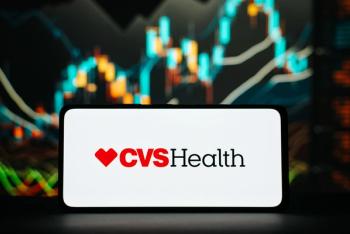
“Biosimilar First” Policy at Mayo Clinic Nets Big Cost Savings
The policy led to $23 million in cost savings within the first 12 months.
A “biosimilars first” policy enacted at the Mayo Clinic—requiring providers to first utilize the lowest cost biosimilar, rather than the originator drug for new patients, has led to significant cost savings for the organization, according to a Mayo Clinic executive who spoke during the GRx+Biosims 2021 Virtual Conference, held November 8 through November 10, 2021.
“We reduced our drug expenditures by double-digit millions of dollars,” Eric Tichy, PharmD, division chair , supply chain management, pharmacy supply solutions, the Mayo Clinic in Rochester, Minnesota, said during the a session titled “Increasing Biosimilars Adoption: Providers’ and Patients’ Perspectives.”1
In fact, the new policy produced $23 million in cost savings within the first 12 months, Tichy told Drug Topics®.
After the policy switch, the Mayo Clinic is approaching 90% biosimilar adoption, up from 5% in previous years, according to Tichy. “It does demonstrate how much the provider has the ability to influence biosimilar adoption.”
When the Mayo Clinic first adopted the policy in September 2020, the organization had great buy-in from its health care providers, according to Tichy. The key was providing education to providers—years before biosimilars were even on the market. “We pointed out that biosimilars have a lot more data than other [drugs that] we switch patients to,” Tichy said.
All patients who were taking an established therapy were allowed to continue that therapy until completion. “Many patients opted to change, while others preferred to complete their course of therapy on the product they started with,” Tichy said.
Patients take cues from the providers and the nurses, Tichy noted, and when providers are confident in, and educated about, biosimilars, that message comes across.
Kathy Oubre, chief operating officer of the Pontchartrain Cancer Center in Covington, Louisiana, and co-chair of the Community Oncology Alliance’s Biosimilars Committee, agreed that education of doctors, nurses, and other health care professionals is paramount.
“The best programs we do are the ones that involved all the stakeholders in explaining why we do what we do,” Oubre said. “We believe in the science [of biosimilars], and we believe it will bring down health care costs. When a patient is sitting in the infusion chair with the nurse, the nurse needs to feel comfortable and educated enough to have that conversation.”
The biggest challenge, however, is that some payers designate which biosimilar drug health systems must use—and it is not necessarily the lowest-cost biosimilar option. “We have to stock all those [biosimilars], depending on the payer requirements in our regions. If we happen to get the wrong one, the payer won’t pay. The providers are almost penalized for using the wrong biosimilar,” Tichy said.
While some in the health care community worry about switching from the innovator to a biosimilar, none of the Mayo Clinic patients who have made the change had a bad reaction, according to Tichy.
“My hope is that that with real-world evidence, if we can get some large studies, it would [alleviate concerns about switching],” Tichy said. “Ninety percent of the drugs in the United States are generic now, and patients don’t think twice about using generic drugs. If we had better data for biosimilars, [it would be the same].”
“The way you talk about biosimilars really matters,” agreed Anna Hyde, vice president of advocacy and access for the Arthritis Foundation, an organization that heavily utilizes FDA information when developing educational materials about biosimilars.
Tichy also relies on the FDA when educating patients and providers about biosimilars. The agency’s web site defines a biosimilar as “a biological product that is highly similar to and has no clinically meaningful differences from an existing FDA-approved reference product.”2
“That statement is very powerful,” Tichy said. “That is my first go-to.”
The Ponchartrain Cancer Center also references the FDA in much of its patient education, explaining how biosimilars were approved and came to market. “They do go through a rigorous process,” Oubre added.
References
Increasing biosimilars adoption: Providers’ and patients’ perspectives. Presented at: GRx+Biosims; November 8-10, 2021. Virtual.- Biosimilar and interchangeable products. FDA. Updated October 23, 2017. Accessed November 22, 2021.
https://www.fda.gov/drugs/biosimilars/biosimilar-and-interchangeable-products
Newsletter
Pharmacy practice is always changing. Stay ahead of the curve with the Drug Topics newsletter and get the latest drug information, industry trends, and patient care tips.















































































































